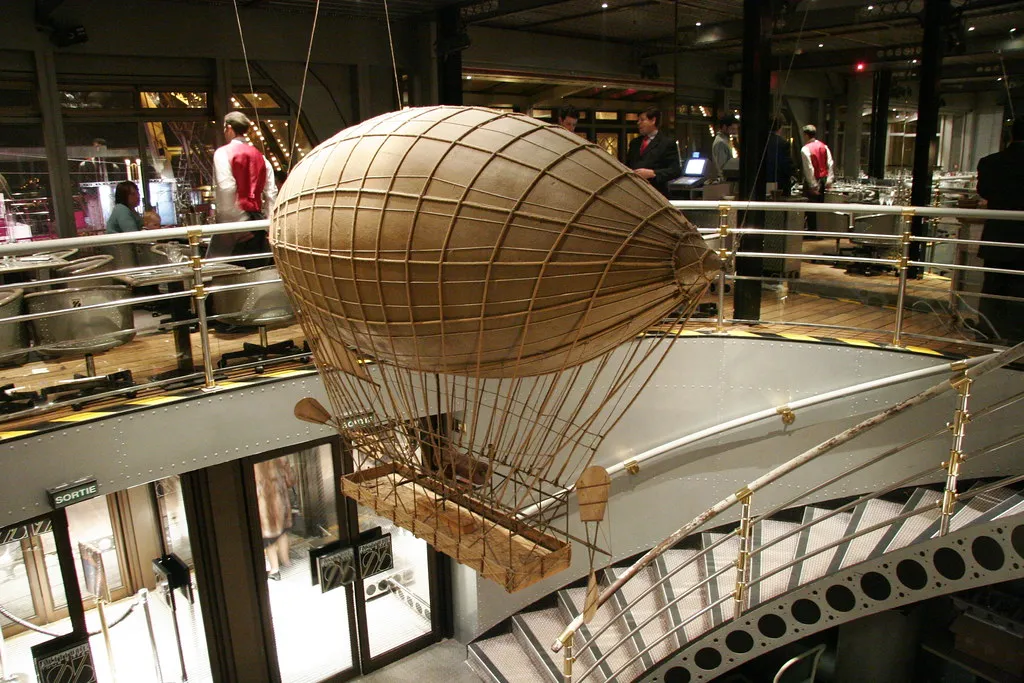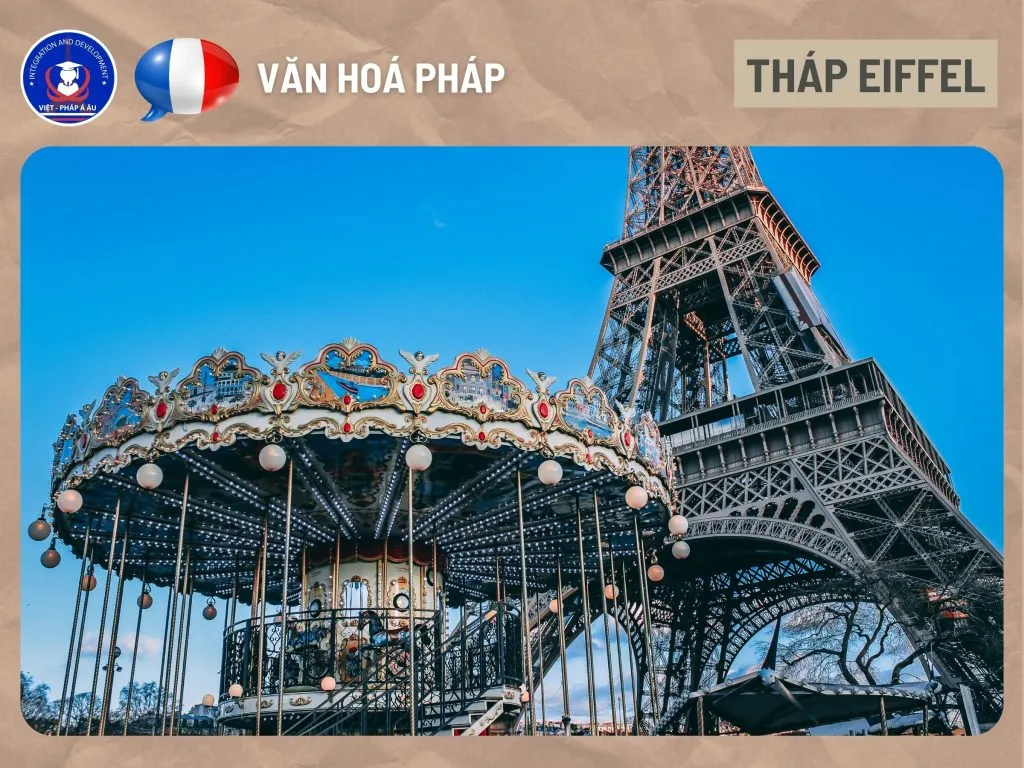The Eiffel Tower, more than just an architectural marvel, is an irreplaceable symbol of Paris and France. This towering spire, with its timeless beauty, attracts millions of visitors each year. But what makes the Eiffel Tower so special? Join “Du lịch khắp thế gian” (Travel the World) as we explore the history, unique architecture, and fascinating stories behind this icon, to better understand why the Eiffel Tower holds such a significant place in the hearts of the French and the world.
I. The History of the Eiffel Tower’s Creation and Construction
The Eiffel Tower, a renowned architectural symbol of Paris, France, is not merely a structure but also a testament to human innovation and daring spirit. The story of its construction is a captivating journey, from a bold idea to its towering presence in the Parisian skyline.
1. Genesis
In 1884, the French government decided to host the 1889 World’s Fair to commemorate the centennial of the French Revolution. In this context, a design competition was held to find a unique and symbolic architectural centerpiece for this momentous event. The goal was to create the “highlight” of the exhibition, a structure that would showcase France’s industrial prowess and creativity.
2. Design and Construction Process
Although commonly known as the “Eiffel Tower,” few know that this project was initially conceived by two talented engineers, Maurice Koechlin and Emile Nouguier. Gustave Eiffel, a famous engineer and entrepreneur, acquired the patent and undertook the project.
The construction of the Eiffel Tower spanned 26 months, from 1887 to 1889. This was a remarkable engineering feat at the time, with over 300 workers laboring tirelessly to assemble more than 18,000 metal parts. Astonishingly, no fatalities occurred during the construction process, a testament to the meticulous planning and skill of the engineers and workers.
3. Initial Controversies
Upon its unveiling, the Eiffel Tower’s design sparked considerable controversy among Parisian artists and intellectuals. Many deemed the structure too modern and incongruous with the classical beauty of the city. Some even derided the Eiffel Tower as a “tragic street lamp” or a “giant factory chimney.” However, Gustave Eiffel steadfastly defended his project and ultimately convinced the public of its value.

II. Unique Architecture and Impressive Figures
The Eiffel Tower is not only an aesthetically pleasing architectural marvel but also an engineering achievement with impressive statistics. The tower’s unique structure has captivated engineers and architects worldwide.
1. Height and Weight
Upon completion, the Eiffel Tower stood at a height of 300 meters. With the addition of antennas, its height reached 324 meters, equivalent to an 81-story building. Constructed entirely of iron, the Eiffel Tower weighs a total of 10,100 tons.
2. Thermal Expansion Effect
Due to its iron construction, the Eiffel Tower’s height can vary with temperature. In summer, it can be approximately 15-18 cm taller than in winter due to thermal expansion.
3. Observation Decks
The Eiffel Tower has three observation decks, offering visitors panoramic views of Paris from above. The first deck is located at 57 meters, the second at 115 meters, and the third at 276 meters. Visitors can ascend to the decks by elevator or stairs.
4. Number of Steps
In total, the Eiffel Tower has 1,665 steps from the ground to the summit. However, visitors are only permitted to climb stairs to the second floor.
5. Number of Rivets
Approximately 2.5 million rivets were used to assemble the Eiffel Tower’s components.
III. Exploring the Levels of the Eiffel Tower
Each level of the Eiffel Tower offers a unique experience for visitors. From the first to the third floor, you’ll discover fascinating aspects and admire Paris from different perspectives.
1. First Floor – Discover History and Architecture
The first floor of the Eiffel Tower is located 57 meters above the ground. Here, you can learn about the tower’s construction history through information panels and exhibits. You can also walk on the transparent glass floor, providing a thrilling sensation as you look down below.
2. Second Floor – Panoramic Views of Paris
The second floor of the Eiffel Tower is situated 115 meters above the ground. This is an ideal spot to enjoy panoramic views of Paris. You can easily identify famous landmarks such as the Seine River, Notre Dame Cathedral, the Louvre Museum, and the Arc de Triomphe.

3. Top Floor – Summit Experience
The third floor of the Eiffel Tower is located 276 meters above the ground. This is the highest level accessible to the public. From here, you can admire Paris from a completely different angle, appreciate the city’s vastness, and marvel at the stunning architecture from above. This level also houses Gustave Eiffel’s office and a luxurious champagne bar.
IV. The Eiffel Tower – A Cultural and Tourist Icon
The Eiffel Tower is not just an architectural structure but also a cultural symbol of France. This tower has become a source of inspiration for numerous works of art, literature, and film.
1. Top Tourist Destination
The Eiffel Tower is one of the most popular tourist destinations in the world, attracting millions of visitors annually. Tourists come to admire the tower’s beauty, enjoy panoramic views of Paris, and experience the romantic atmosphere of the city of love.
2. Icon in Culture
The image of the Eiffel Tower appears everywhere, from movies and books to souvenirs. This tower has become a symbol of Paris and France, representing romance, beauty, and innovation.

V. Little-Known Fun Facts About the Eiffel Tower
Beyond the basic information, the Eiffel Tower holds many interesting facts that you may not know.
1. The Eiffel Tower Was Once Painted Yellow
In the past, the Eiffel Tower was painted yellow to protect it from rust. However, it was later repainted brown, the color we see today.
2. The Eiffel Tower Has a Secret Underground Bunker
Beneath the Eiffel Tower lies a secret underground bunker, used for transporting materials and equipment during construction.
3. The Eiffel Tower Was Once Used as a Radio Tower
In the early 20th century, the Eiffel Tower was used as a radio tower, broadcasting important information during wartime.
VI. Conclusion
The Eiffel Tower is not only a magnificent architectural achievement but also a cultural symbol of France. From its controversial origins to its unique architecture and fascinating stories, the Eiffel Tower remains a captivating destination for tourists worldwide. If you have the opportunity to visit Paris, don’t forget to visit the Eiffel Tower to admire its beauty and experience the romantic atmosphere of the city of love.
Are you ready for your journey to discover the Eiffel Tower and Paris? Share your desires and plans, so “Du lịch khắp thế gian” (Travel the World) can accompany you and provide the most useful information to help you have a truly memorable trip!